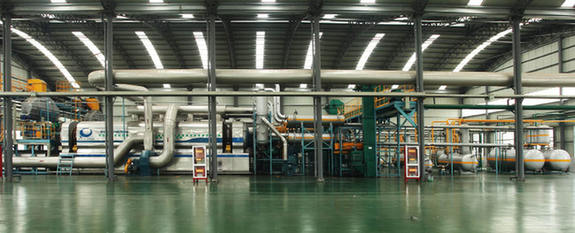The Promise of Fruitful Sino-British Cooperation
By HU JIANGYUN
Relations between Britain and China date back to antiquity, founded on ancient trade and missionary contacts. Beginning in the 1830s, Britain was the first country to industrialize and become a world economic power. In the Opium Wars Britain forced China to open its doors, bringing the country into the world market at gunpoint. On the other hand, Britain was also the first Western country to recognize the People’s Republic of China, and returned Hong Kong to Chinese sovereignty in 1997. Now, China and Britain are entering the new century with a partnership founded on deep cooperation in many areas.
Vital Trade Partner
Britain is one of China’s most important markets, and the third largest trade partner in Europe after Germany and the Netherlands. Chinese exports to Britain include computer and telecommunications equipment, clothing, toys, shoes, plastic products, and furniture. Its imports from the U.K. include automobiles and parts, electrical and medical equipment, telecommunications devices, pharmaceuticals, and raw materials. Official figures show that in 2013 Sino-British trade reached US $70.04 billion, an annual growth of 11 percent. Of this trade, China exported goods worth US $50.949 billion and imported US $19.091 billion. This represents increases of 10 and 13.6 percent from the previous year, respectively, and a growing share of China’s foreign trade. Between 2000 and 2013 annual bilateral trade increased by 15 percent, with exports growing by 16.09 percent and imports by 12.67 percent.
China is also Britain’s second largest non-European trade partner, after the United States. China is Britain’s seventh-largest export markets and its third biggest source of imports. According to the UK’s Office for National Statistics, Sino-U.K. bilateral trade in 2013 reached £45.766 billion, an increase of 8.82 percent over the previous year.
Britain exported 17.54 percent more to China than the previous year, while their overall exports grew by only 1.27 percent. Britain imported 5.9 percent more from China, while their worldwide imports grew by only 0.84 percent. Between 2000 and 2013, Sino-British trade increased by 15.09 percent, far exceeding Britain’s total trade growth of only 4.1 percent. Since 2000, British exports from China grew by an average 16.52 percent per year (compared with a worldwide annual increase of only 3.5 percent) and its imports from China grew by 11.87 percent (compared with its average annual export growth of only 4.57 percent).
The bilateral service trade is also growing, with a brisk exchange in transportation, tourism, entertainment, finance, insurance, and other commercial services. China’s share of Britain’s service trade is growing rapidly. Official U.K. figures show that bilateral service trading grew by an annual average of 14.03 percent between 2000 and 2012, while Britain’s overall service trade increased by only 5.64 percent. In that period, service exports to China grew from £452 million to £2.901 billion. British service exports to China grew at an annual average of 15.37 percent, far outstripping Britain’s overall service exports which grew at only 6.55 percent per year. In the same period Britain imported £1.211 billion worth of Chinese services, up from £294 million with an average annual growth of 11.5 percent. Britain’s overall service imports grew at only 4.38 percent.
Significant Investments
Despite a recent decline, the U.K. remains an important source of investment in China. By the end of 2013 there were 7,437 British investment projects in China with a combined value of US $18.467 billion in such fields as manufacturing and services. As China’s second largest EU investor, Britain is also an important source of foreign direct investment with an annual value over US $400 million. Despite suffering from the international financial crisis, the U.K. remains a major source of investment capital in China. Many British enterprises have Chinese R&D and training centers, and eight British banks have offices in China including HSBC and the Royal Bank of Scotland.
Likewise, Britain is also becoming a destination for Chinese investments. According to the Chinese Ministry of Commerce, the U.K. received US $2.775 billion in direct Chinese investments in 2012, the largest recipient in Europe. By the end of 2012, Chinese direct investments in the U.K. totaled US $8.934 billion, second only to Luxembourg. Between 2003 and 2012, Chinese investments in Britain grew at an average of 83 percent per year. Based on figures from U.K. Trade and Investment, more than 500 Chinese enterprises have invested in Britain. Chinese firms are beginning to establish themselves in Britain through mergers and acquisition. Incomplete figures show that by the end of 2012 Chinese companies had completed mergers in Britain with a combined value over US $28 billion. In 2012, the China Investment Corporation purchased an 8.68 percent stake of Thames Water Utilities and a 10-percent share of London Heathrow Airport. Huawei announced a £1.3 billion investment in Britain, and Shanghai Bright Food Group purchased 60 percent of the British food enterprise Weetabix. In 2013, China’s ABP Holding’s Group invested £1 billion to establish ABP London. Dalian Wanda Group spent US $1.6 billion on merging with Sunseeker Yachts.

